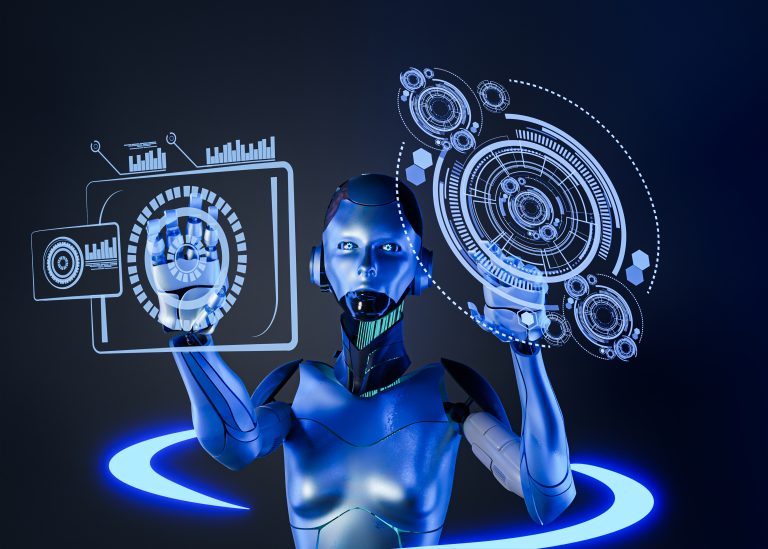Introduction
How do AI chatbots work? When you go to a website and a small chat window pops up that says, “How can I help you today?” you’re talking to a chatbot. But here’s the interesting part: modern AI chatbots are more than just machines that answer questions. They are smart systems that can understand natural language, keep track of what is going on, and even respond in real time like a person would. AI chatbots are everywhere in today’s digital-first world. You can find them in customer service portals, mobile banking apps, and smart speakers like Alexa and Google Assistant. Businesses depend on them to provide support around the clock, cut costs, and grow their operations, while users love getting help right away and tailored to their needs.
So, what do AI chatbots do? The answer is a mix of natural language processing (NLP), machine learning, large language models (LLMs), and natural language generation (NLG). These technologies enable chatbots to interpret human intent, manage dialogue flow, and generate relevant responses—making them one of the most important innovations in modern AI.
This article will go over how do AI chatbots work, the different types of chatbots, how they can be used, their pros and cons, and what the future holds for them.

Learning more about AI chatbots
A chatbot is a computer program that can talk to people through text or speech. But there is a big difference between chatbots that follow rules and chatbots that use AI to talk to people.
- Chatbots Based on Rules: These depend on scripts and decision trees that have already been made. They can only answer certain questions. For instance, if you ask, “What are your hours of work?“ they will give you the answer they have saved. The bot might not understand if you say something like “Are you open late tonight?“ instead.
- Chatbots with AI: These are more than just scripts that have been written before. They can figure out what you mean (the goal behind your words) and pull out entities (important information like dates, places, or product names) using machine learning, NLP, and LLMs. This lets them answer flexibly, even if the question is asked in a new or hard way.
Here’s example about How do AI chatbots work?
For example, an AI chatbot knows that when you type “Book me a flight to London next Friday evening,”
Intent → Book a flight
Entities: Destination: London; Date: Next Friday; Time: Evening.
Natural language understanding (NLU) powers this understanding layer, which is what makes AI chatbots feel more like people than older bots.
How do AI chatbots work
It may seem like magic how do AI chatbots work, but it’s really just a series of well-planned steps:
1. Processing User Input
- You start the conversation by typing or saying something.
- If it’s voice, the chatbot converts it into text using speech-to-text processing.
- Tokenisation breaks the text down into smaller parts so that it can be studied.
2. Natural Language Understanding (NLU)
- The chatbot figures out what you want and pulls out specific data points.
- “Remind me to call John at 5 pm tomorrow,“ for example.
- Intent = Setting up a reminder.
- Entities = Contact: John, Date: Tomorrow, Time: 5 pm.
3. Machine Learning and Large Language Models (LLMs)
- AI chatbots use transformer models (like GPT) that use self-attention to figure out what things mean.
- If you say, “Make it at 6 pm instead,“ the bot knows you’re still talking about the reminder because these models know what context means.
4. Managing Dialogue
- This part keeps the conversation going and makes sure it stays on topic.
- It can switch between contexts, follow up, and have conversations that go on for more than one turn.
5. NLG: Response Generation
- The chatbot makes a response.
- In retrieval-based models, it fetches answers from a database.
- It makes a new answer that fits the question in generative models like GPT.
6. Getting better and learning
- Chatbots get better over time by using reinforcement learning with human feedback (RLHF) and real-world data.
- This enables personalisation and smarter responses as the system evolves.
- This happens in milliseconds, making it seem like a smooth, “human-like“ conversation.
Different kinds of AI chatbots
There are different kinds of chatbots. Here are the main categories:
- Rule-based chatbots use pre-written scripts and answers.
- AI-Based Chatbots: They use ML, NLP, and LLMs to have conversations that can go anywhere.
- Hybrid Chatbots use both AI intelligence and rule-based logic.
- Generative AI Chatbots use big language models to make new sentences on the fly.
- Industry-Specific Chatbots: These chatbots are made for healthcare, finance, retail, or education and have their own knowledge bases.
Uses and Applications
AI chatbots are everywhere—sometimes without you realising it. Some important examples are:
- Customer Service and Help Desks: Banks, airlines, and online stores all use chatbots to help customers right away.
- E-commerce Sales Assistants help customers find products and complete their purchases.
- Virtual Tutors & Education: Helping students with questions and practice problems.
- AI Voice/Chat Assistants: Siri, Alexa, and Google Assistant are all powered by chatbots.
- Marketing and Lead Generation: Getting people to visit your website, qualifying leads, and increasing conversions.
Advantages of AI Chatbots
Chatbots are good for both businesses and users. Some good things are:
- Twenty-four hours a day, 7 days a week, Availability means always being ready to answer questions.
- Scalability means being able to handle thousands of queries at once.
- Cost Savings: You won’t need as many customer support staff.
- Personalisation → Tailor responses based on user history and behaviour.
- Faster Interactions → Give answers right away that are correct.
Problems and Limitations
Even though they are powerful, chatbots are not perfect:
- AI Hallucinations → Sometimes come up with false or made-up information.
- Privacy & Security Concerns → Must comply with GDPR and HIPAA regulations.
- Dependence on Training Data: Data that is biased or missing can make things less accurate.
- Not having emotional intelligence means you have trouble with sarcasm, empathy, or complicated feelings.
More about future trends in AI chatbots
There are a lot of new and exciting things that could happen with AI chatbots in the future. This is where we’re going:
AI chatbots that can do more than one thing
Bots in the future will be able to do more than just read text. They will mix text, voice, pictures, and even video. If you asked a chatbot, “Show me how to change a tire,“ you would get a video tutorial right away.
Hyper-Personalisation
- AI chatbots will make personalised suggestions based on things like your browsing history, your buying habits, and how you act online. An e-commerce chatbot might say, “Do you want to see the new arrivals in your size? Last time you ordered running shoes, they were in your size.”
- Combining IoT and AR/VR: Chatbots will be a big part of smart homes and connected devices. In AR and VR settings, they could be like virtual guides, leading you through experiences that feel real.
Emotional Intelligence at a Higher Level
Future chatbots may recognise sentiment, tone, and emotion. If a customer is upset, the chatbot could show that it understands before passing the issue on to a human agent.
Role in Business Automation & SaaS
AI chatbots will move beyond customer support. They will be able to connect to enterprise SaaS platforms for things like payroll, HR, project management, and IT automation, acting like digital employees on their own.
FAQs
Q1: How do chatbots remember what people are talking about?
They use systems for managing conversations that keep track of the history, goals, and people involved. This helps them remember what you asked before and gives you clear answers.
Q2: Do AI chatbots have to be connected to the internet all the time?
Not all the time. Some bots run on the device itself, but most AI chatbots that run in the cloud need an internet connection to connect to their models and databases.
Q3: Which industries get the most out of AI chatbots?
Industries like banking, e-commerce, healthcare, travel, and education see the biggest gains because they rely heavily on customer engagement and support.
Q4: Can AI chatbots understand emotions?
Currently, chatbots can detect sentiment (positive, negative, neutral) but struggle with complex emotions. This may change in the future with improvements in emotional AI.
Q5: How safe are AI chatbots that deal with private information?
Data encryption, compliance with GDPR and HIPAA, and a strong architecture are all important for chatbot security. Providers with a good reputation follow strict safety rules.
Q6: What is the difference between a regular chatbot and a generative AI chatbot?
Traditional chatbots use pre-written answers, but generative AI chatbots (like those based on GPT) make new answers on the fly. This makes them more flexible and human-like.
Q7: Why do AI chatbots sometimes “hallucinate”?
When chatbots make believable but wrong information because they don’t have enough training data or they don’t understand the context correctly, that’s called “hallucinations.”
Final thoughts
In this article, We explained that How do AI chatbots work in deatailed? AI chatbots have changed the way we use technology. They can have natural, human-like conversations by combining input processing, NLU, machine learning, LLMs, dialogue management, and NLG.
Even though there are still problems like privacy issues and hallucinations, the benefits—24/7 support, scalability, and personalisation—make them an important tool for both businesses and people.
The future holds even more advanced, multimodal AI chatbots that will fit right into our digital lives.

One Response